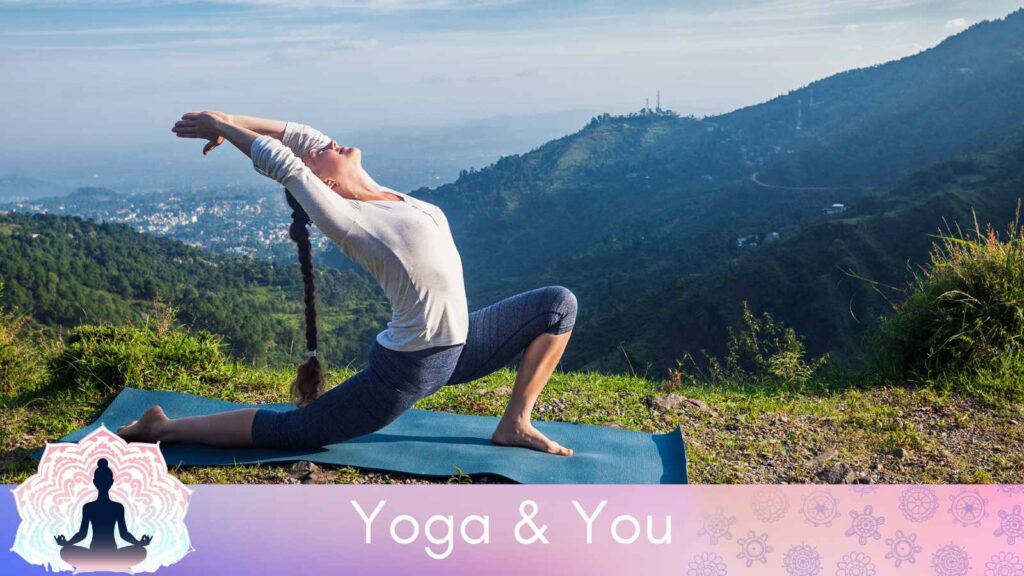Anjaneyasana or crescent moon pose is great for the lower body. But it will only strengthen your legs if you do it correctly. Follow these steps and enjoy its health benefits.
In the world of strength training, lunges have gained popularity due to their ability to strengthen the hips, legs, and back. They are also great for improving mobility as well as stability. The cool thing about this exercise is that you can also do them during your yoga class. A slightly difficult version of this exercise is called anjaneyasana in yoga. It is sometimes called low lunge pose or crescent moon pose. In this pose, your front knee will be bent at a 90-degree angle while your back leg will be extended behind you and your arms will be raised above your head. This is especially good for your lower body, as it stretches tight muscles in that area.
What is Anjaneyasana?
Anjaneyasana, also known as low lunge pose or crescent moon pose, is a dynamic yoga pose that offers many health benefits. “This pose involves a deep stretch of the hips and legs while simultaneously promoting balance, coordination and mental focus,” says fitness trainer Dr. Mickey Mehta. Low lunge pose is often used as a preparatory posture for deeper stretches or an advanced pose like Hanumanasana or Monkey Pose.
Here are the muscles stretched in crescent moon pose:
- It stretches the hip flexors, quadriceps, and hamstrings, with particular attention to the biceps femoris, which is the muscle at the back of the thigh.
- The glutes, and in particular the gluteus maximus, are stimulated.
- There is also a very slight stretch along the chest and shoulders (pectoralis major, deltoids) and even in the upper back.
What are the benefits of Anjaneyasana?
1. Strengthens your lower body
Anjaneyasana helps stretch many muscles such as the quadriceps, hamstrings and glutes, which strengthens the legs. Lunges, including low lunges, can tone the hips, glutes and thighs, according to a study published in the Journal of Human Kinetics in 2018.
2. Pose that opens the heart
“Crescent Moon pose is considered a heart-opening pose because it stretches the chest and shoulders, reducing tension and allowing you to sit up straight,” says the expert. This makes you lift your chest and opens your lungs for expansion.
3. Improves coordination and balance
Yoga, in general, is known to improve people’s physical balance. A 2016 study, published in Age and aginghas shown that yoga can help improve balance in people aged over 60. Anjaneyasana focuses on improving concentration and balance. The concentration required to maintain the posture helps strengthen the mind-body connection. “It’s a good pose to improve physical and mental balance,” says Dr. Mehta.
4. Prepare for deeper stretches
It can be used as a prior pose to more complex positions like hanumanasana (monkey pose) or eka pada rajakapotasana (one-legged king pigeon pose). This helps open the hips and thighs, allowing a smoother transition into deeper stretches.
5. Sciatic Nerve Pain Relief
Performing crescent moon pose can help gently stretch the muscles around the sciatic nerve, especially at the hip. “This helps release any tension or pain that may result from tightening or compression of the sciatic nerve,” says Dr. Mehta.
6. May be good for digestion
Anti-wind pose is one of the popular asanas to improve your gut health. If you are looking for a yoga pose to improve digestion, you can also try the crescent moon pose. While doing the low lunge pose, your abdominal muscles are stimulated, which helps improve digestion.
How to do Anjaneyasana?
- Assume the high lunge position with your right foot forward and your left leg straight back.
- Let your left knee reach close to the floor, with your right knee remaining above your right ankle.
- Engage your core, lengthen your spine, broaden your chest, and keep your shoulders relaxed.
- Stand with your arms raised above your head and your palms facing each other while looking forward or slightly upward.
- Hold the pose for 5 to 10 breaths then switch to the other side.

Anjaneyasana Variations
- Anjaneyasana with knee lift: Instead of lowering your back knee, keep it slightly raised to reduce knee strain.
- Anjaneyasana with strap: Add a strap under your front foot for a deeper stretch through the hip and thigh.
- Anjaneyasana with forward bend: Step forward to touch the ground with your hands and create a more intense stretch in the back leg and hip.
- Twisted Anjaneyasana: Turn your torso to one side and keep your hips facing forward for a deep stretch of the spine and hips.
- Anjaneyasana with wall support: Start facing a wall by leaning against the wall to stabilize your body, slowly step back then try to raise your back leg for more stability.
Who should avoid Anjaneyasana?
- People with knee injuries should avoid deep knee bends or modify this pose by keeping your back knee slightly lifted to reduce strain.
- Modify crescent moon pose by keeping your front thigh at a 90-degree angle to the floor to avoid overextending your hip.
- People with back injuries should focus on keeping their spine long and avoiding deep forward bends that could strain the lower back.
Rather, Anjaneyasana is a foundational yoga pose that contributes to physical strength, flexibility and balance. This yoga pose is also good for improving concentration.
You may also like


Related FAQs
What is the difference between ashwa sanchalanasana and anjaneyasana?
Ashwa sanchalanasana, the high lunge pose, and anjaneyasana, the low lunge pose, are similar in their lower body engagements, but differ in foot alignment. The back foot is in a curled position with the toes tucked under in ashwa sanchalanasana, but the toes of the back foot are tucked in with the knee lowered closer to the floor in anjaneyasana. The difference lies in the increased intensity of the stretches in the hips and legs.
How long should you hold anjaneyasana?
Practice anjaneyasana for 5-10 seconds on both sides. When you are comfortable with the pose, you can increase the duration to 30 seconds or 1 minute on each side.
#Anjaneyasana #crescent #moon #pose #Benefits #steps



